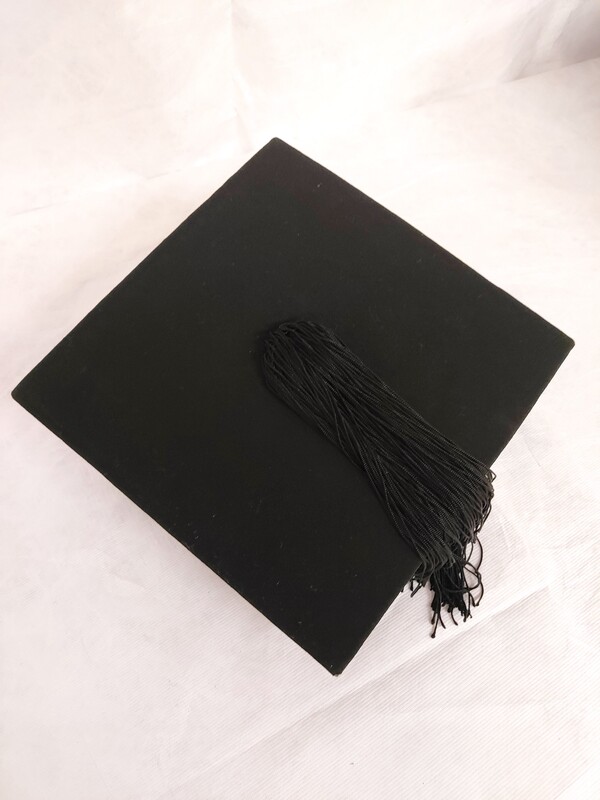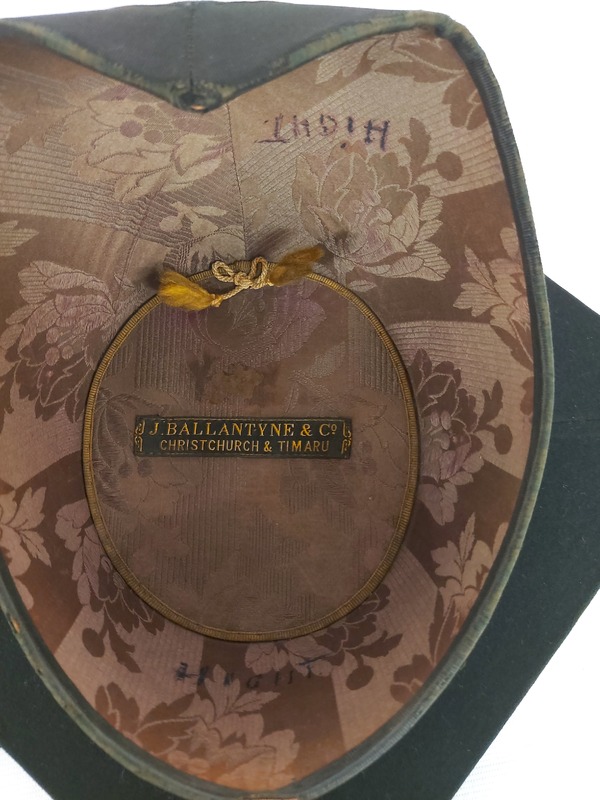James Hight
Trenchers, or mortar boards, are an essential part of academic dress, most commonly worn at formal academic events. This trencher belonged to Sir James Hight (1870-1958) who was both a graduate and a professor at Canterbury College. We can be certain of the ownership of the trencher because ‘Hight’ is inscribed in black pen twice on the inside. It would have most likely been worn as part of his academic regalia during graduation ceremonies.
James Hight began his time at Canterbury College, now the University of Canterbury, as a student in 1891. He earned a Bachelor of Arts in 1893 and a Master of Arts in 1894 with double First-Class Honors in English and French. In 1901, he was appointed as a lecturer in constitutional history and political economy at Canterbury College. This was the first appointment of a New Zealand born lecturer at the College. Following that, in 1909 Hight became a professor of history and then chair of the Department of History in 1919, a position which he held until February 1949. From 1928-1941 Hight was also the Rector of the University.
Hight had a decorated professional career in academia, but his successes would extend further. In addition to these accomplishments, Hight was a highly valued teacher. His pupils affectionately referred to him as ‘the Doctor’. He went above and beyond for his students to give them the best chance possible and encouraged his students to immerse themselves in their respective studies outside of the classroom. His students respected and admired Hight as he exemplified the true characteristics of what it meant to be a scholar and to wear a trencher. However, Hight was not always so serious. On a trip to England, there was a ball held on the ship. It was reported that Hight did not attend in formal dress, but rather, dressed as a cowboy. He was also an avid lover and participant of music, playing his violin in local orchestras and collecting violins.
Upon his retirement in 1948, he was presented with a Festschrift, Liberty and Learning, a collection of works and essays in his honor. Several colleagues and students contributed to this literature and it is made clear the significant impact he had personally and academically on many of these people. He was knighted in 1947 for his services to education. Standing on the stage every year at College graduations wearing this mortar board, Hight would have been a fitting symbol of the value of education.


